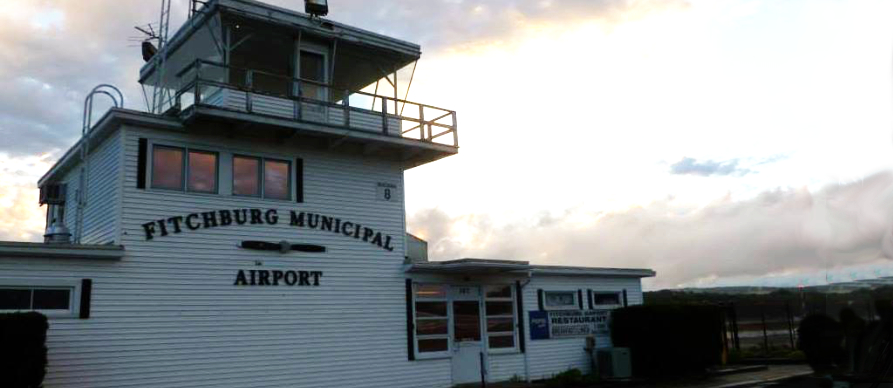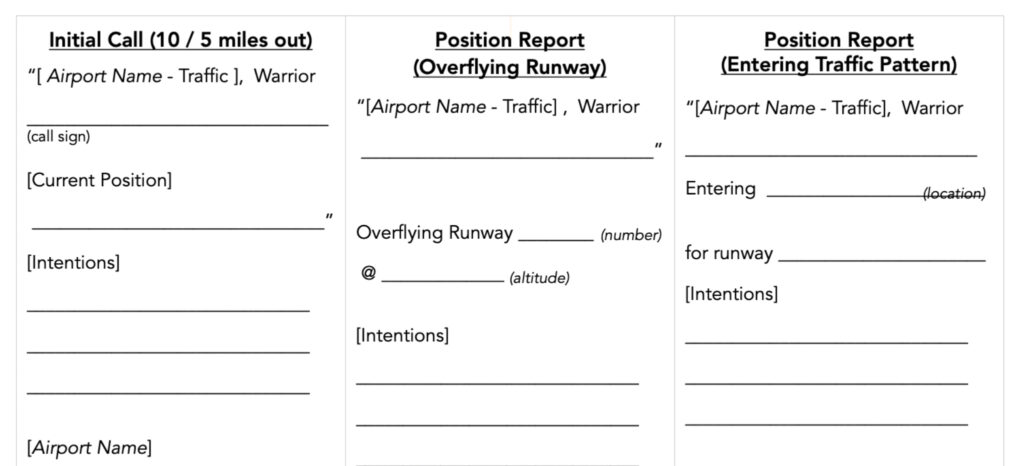
Radio communications at an untowered airport are primarily governed by a set of common procedures to ensure safety and effective coordination between pilots, even though there is no (operating) control tower.
Common Traffic Advisory Frequency (CTAF)
The CTAF (Common Traffic Advisory Frequency) is a VHF radio frequency that is allocated for the use at untowered airports (or airports without an active control tower), allowing pilots to communicate their intentions and position to others in the area. The goal of the CTAF is to provide a common frequency for pilots to self-announce their actions and improve situational awareness, thereby reducing the risk of collisions in the airspace around an untowered airport.
- It is important to note that many airports local airports may use the same frequency – you may hear calls and reports being made by pilot operating at other airports.
Pilots should continuously monitor the CTAF while operating at an untowered airport, even if no one is currently transmitting, to detect other traffic operating at the airport or in its vicinity.
Frequency: The CTAF frequency can by found:
- On sectional charts
- In chart supplement publications.
- in aircraft mounted GPS units (e.g Garmin G430/530 G1000 etc)
- With airport information in EFB applications such as Foreflight / Garmin Pilot etc.
CTAF frequencies are often in the range of 118.0 MHz to 123.0 MHz, but they vary by airport.
If a CTAF is not available, pilots are encouraged to use the published Unicom frequency (often 122.8 MHz) or any other appropriate frequency for the airport. Unicom is used for general communications when no FAA services are available.
General Rules
- Self-Announce: Although not mandatory – It’s crucial that you announce your intentions clearly, even if no other aircraft are heard on frequency. This helps everyone in the area to be aware of your position.
- Be brief but clear: As with all radio communicate – keep your transmissions concise but complete. There’s no need to use overly complex terminology, but make sure you’re providing enough information for others to understand your position and intentions.
- Listen to other pilot’s announcements: By paying attention to other pilots making position reports both on the ground and while fling around the airport, this will allow you to maintain situational awareness of where other aircraft are operating.
- Be alert for traffic operating at the airport that may not be equipped with a two way VHF radio or making calls while flying in traffic pattern around the airport.
- Collision Avoidance. You must be vigilant for other aircraft operating in and around a untowered airport by observing and clearing before making any turns or other maneuvers in the pattern.
Traffic Pattern Reporting
Initial Call-In (Position Reporting) Pilots should announce their position when they are 10-15 miles out from the airport and again as they enter the traffic pattern. Example: [Airport Name, Traffic ] Fitchburg Traffic Warrior 3572M, 10 miles to northeast inbound for landing.
- This lets other pilots in the area know you’re approaching, helping to avoid collisions and ensuring they can anticipate your movements.
This call should be repeated when you are about miles out from the airport
Entering the Pattern: When you’re entering the traffic pattern (either a left or right pattern), you should announce your intentions. For example:
Example: “Fitchburg Traffic, Warrior 3572M, entering left downwind for runway 32, Fitchburg.”*
- Position in the Pattern: Once in the pattern, it’s standard to continue to report each leg of the pattern:
- Fitchburg Traffic, Warrior 3572M, turning left base, runway 32, Fitchburg“
- Fitchburg Traffic, Warrior 3572M, turning final, runway 32 Fitchburg”
Departure Announcements
Before Takeoff: Pilots should announce their intentions before departing, particularly if it’s a non-standard departure. This includes both announcing your runway and direction. For example:
- “Fitchburg Traffic, Warrior 3572M, departing taking to runway 32 for to the northeast, Fitchburg“
Leaving the Pattern:Once you’re clear of the pattern, you can report:
- Fitchburg Traffic, Warrior 3572M, departing the pattern on right crosswind to the northeast, Fitchburg.”
Situational Awareness
Lookout: Even with radio communication, pilots should always keep a lookout for other traffic, especially since radio transmissions don’t always guarantee that others will hear or understand them.
Alertness to Other Aircraft: If you hear another aircraft’s position report that’s near you, adjust your plans accordingly, either by spacing out your pattern or adjusting your approach to avoid a conflict.
Weather Information at Untowered Airports
Prior to either taking off from or flying into a untowered airport you should begin picking up the latest weather information by tuning into either the Automated Weather Observing System (AWOS) or Automated Surface Observing System (ASOS) frequency to listen to and to understand the current weather conditions at the airport.
AWOS and ASOS systems both report weather conditions, but don’t deliver airport information the way ATIS does at towered airports.
AWOS stations report weather information every minute and are operated by the Federal Aviation Administration (FAA).
- ASOS stations are more advanced than AWOS stations and are typically operated by the National Weather Service (NWS).
AWOS and ASOS frequencies can be found:
- On sectional charts
- In chart supplement publications.
- EFB applications such as Foreflight / Garmin Pilot etc.
You will use the weather information to determine the most suitable runway for takeoff and landing operations at the untowered airport.
Radio Calls Script Sheet for Untowered Airports

Download the script sheet to kick start your radio calls at Untowered Airports. Print the sheet out and fill in the blanks prior to attempting to communicate and use the script as a guide to effective communications.